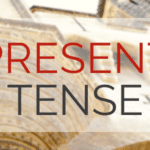
Fortunately for English speakers, learning the French alphabet is not hard at all. All the letters are exactly the same as in English, with the addition of a few different accent marks that you need to learn.
So if the letters are all the same, why is it important to learn the French alphabet? The biggest reason is because it will give you a basic foundation of French pronunciation and how it differs from English pronunciation of different letters.

Notes on the French alphabet
- The h in French is barely pronounced at all.
- The sounds of g and j are almost reversed in French, compared to English.
- Anywhere you see the syllable “zh” on this or other French sites, it doesn’t mean to pronounce the syllable with a typical “z” sound, but with the “g” that is used to pronounce words like “beige” in English.
French alphabet pronunciation
Source: bbc.co.uk/languages/french/
French accent marks
Accent marks in French can serve a couple of different purposes. They can change the otherwise “default” pronunciation of a word (remember, French has pretty strict pronunciation patterns). They can provide a visual cue to differentiate words that are homonyms. (These are words with the same sound but different meaning, like “sale” and “sail” in English). Finally, they can be an artifact of much older French spelling and indicate how a word used to be spelled.
| Accent Mark | Name | Purpose |
| é | accent aigu | makes the é be pronounced like a long “A” in English instead of the soft e in French. Also indicates an s once followed the vowel |
| è ù à | accent grave | usually just a visual indicator to distinguish homonyms (like ou vs. où) |
| ç | cédille | makes the c sound soft when it would otherwise be a hard sound (in front of an a, o or u) |
| â ê î ô û | accent circonflexe | usually indicates an s used to follow the vowel. Also serves as a visual indicator to distinguish homonyms. |
| ë ï ü | accent tréma (also called an umlaut or dieresis) | used when two vowels are next to each other in a world and both should be pronounced. |



